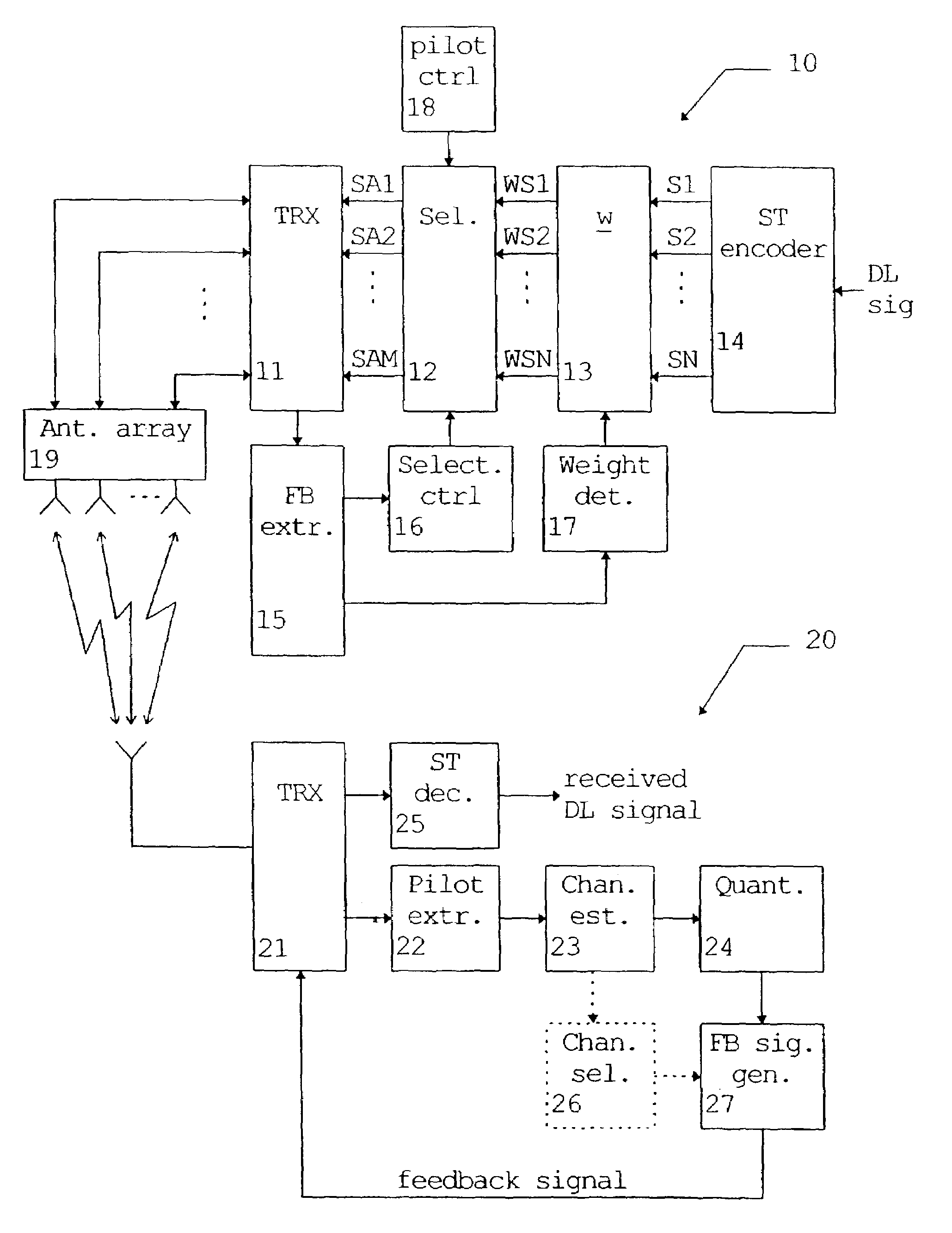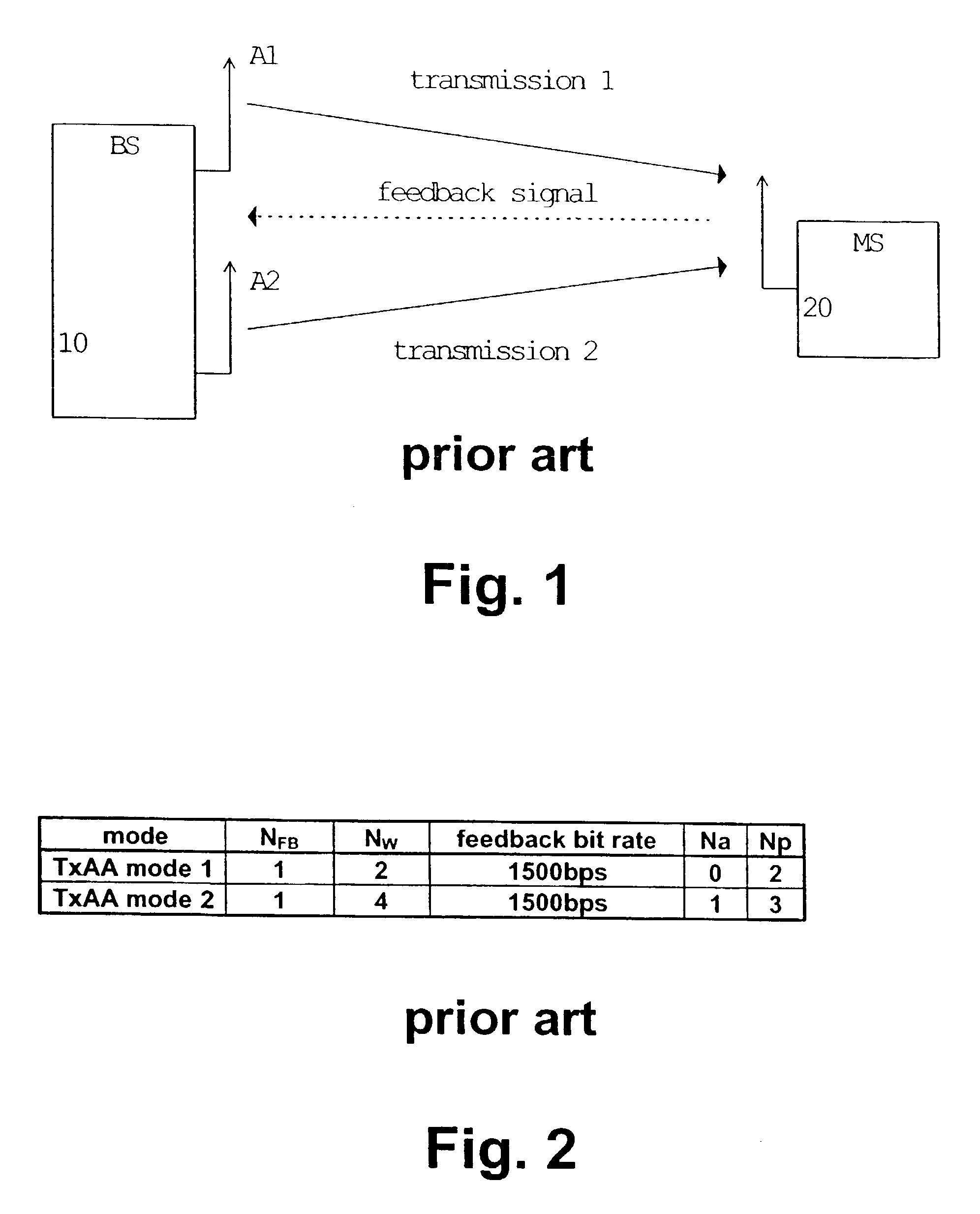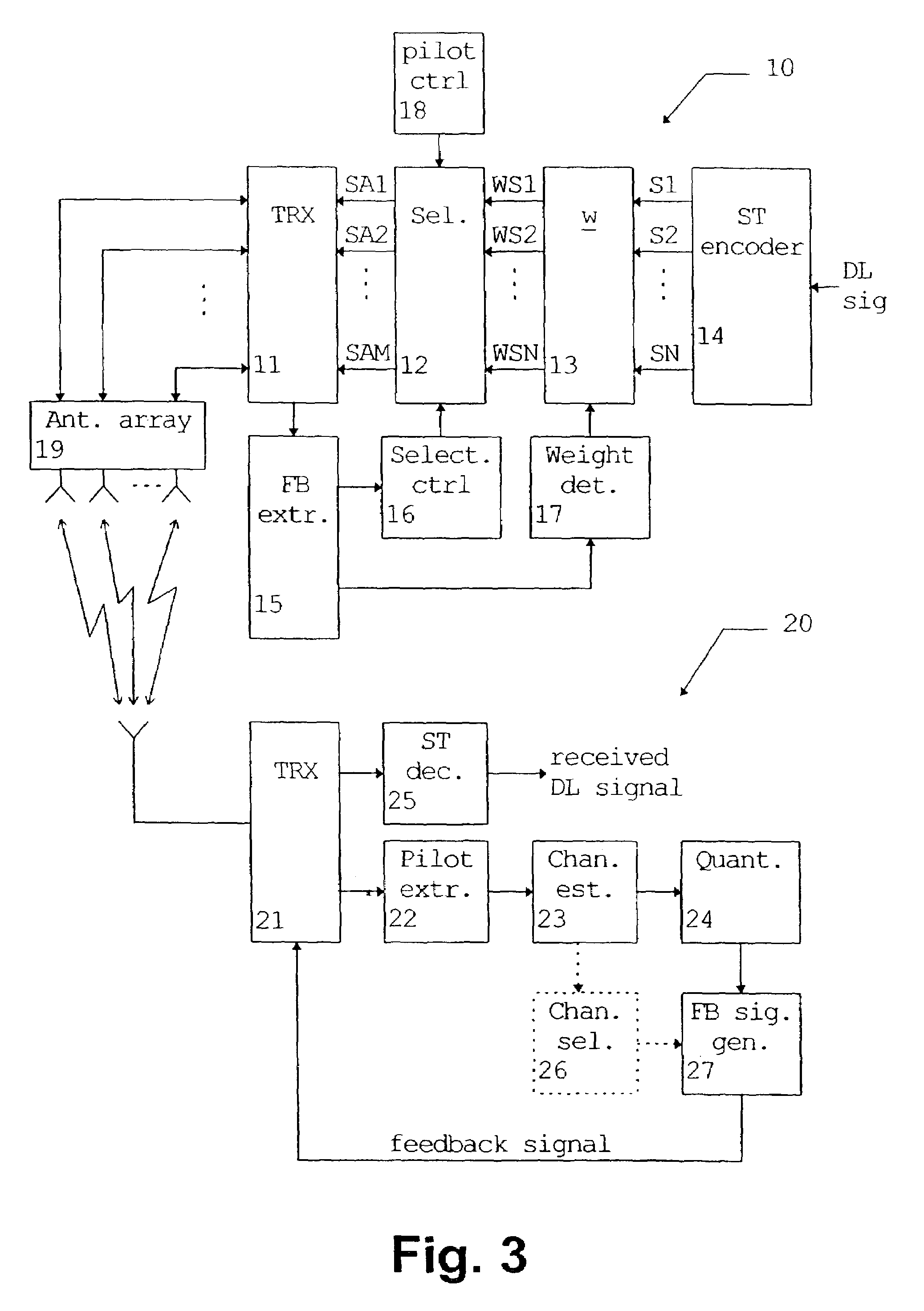Multi-antenna transmission method and system
a transmission method and multi-antenna technology, applied in the field of multi-antenna transmission methods and systems, can solve the problems of affecting the accuracy (or delay) of feedback signaling, the inability to provide multiple receive antennas, and the burden on the downlink channel of the projected data services (e.g. internet), so as to achieve good channel estimation performance and increase the transmission gain
- Summary
- Abstract
- Description
- Claims
- Application Information
AI Technical Summary
Benefits of technology
Problems solved by technology
Method used
Image
Examples
Embodiment Construction
[0058]In the following, the preferred embodiment of the method and system according to the present invention will be described on the basis of wireless transmission between a base station 10 and a mobile station or terminal 20 of a WCDMA system. According to FIG. 3, the base station 10 comprises an antenna array 19 comprising M antenna elements. It is noted that the antenna array may consist of closely spaced antenna elements (interelement spacing e.g. λ / 2) or widely spaced diversity antennas. The array may also include a phasing network such as a Butler matrix in order to generate beams. Furthermore, antennas with orthogonal polarizations may also be used for other diversity antennas.
[0059]The antenna elements of the antenna array 19 are fed by a transceiver TRX 11 which supplies M parallel antenna signals SA1 to SAM to the antenna array 19. The parallel signals SA1 to SAM selected or generated by a selector 12 on the basis of N weighted signals WS1 to WSN supplied from a weighting...
PUM
 Login to View More
Login to View More Abstract
Description
Claims
Application Information
 Login to View More
Login to View More - R&D
- Intellectual Property
- Life Sciences
- Materials
- Tech Scout
- Unparalleled Data Quality
- Higher Quality Content
- 60% Fewer Hallucinations
Browse by: Latest US Patents, China's latest patents, Technical Efficacy Thesaurus, Application Domain, Technology Topic, Popular Technical Reports.
© 2025 PatSnap. All rights reserved.Legal|Privacy policy|Modern Slavery Act Transparency Statement|Sitemap|About US| Contact US: help@patsnap.com



